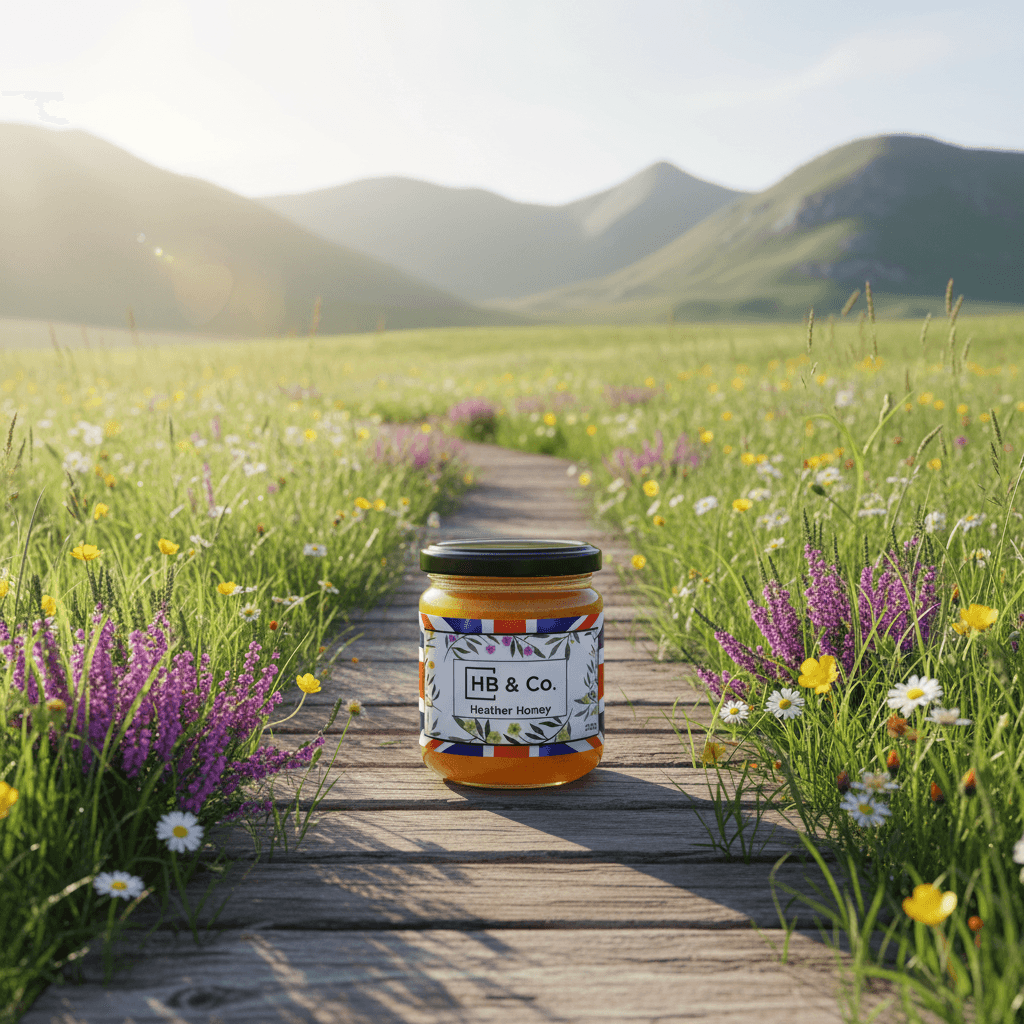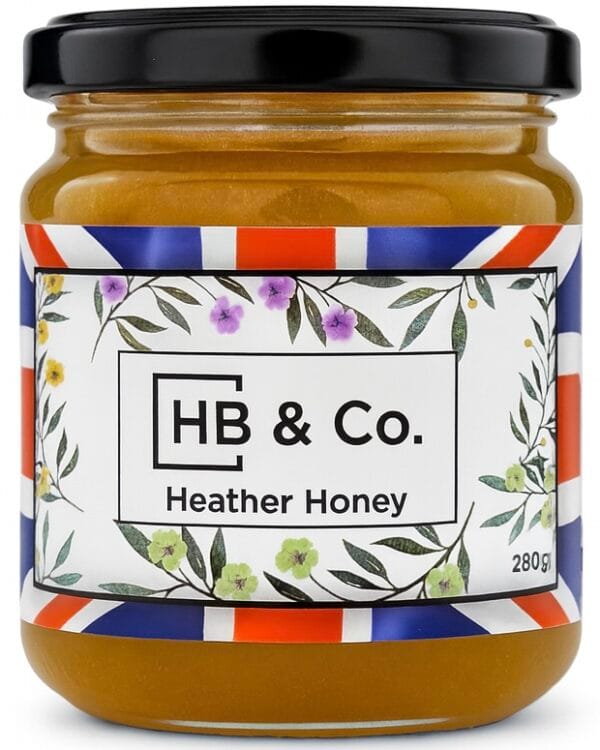Few plants offer the year-round beauty and low-maintenance appeal of heather. These small evergreen shrubs captivate gardeners with their evergreen foliage, extended flowering periods, and remarkable ability to thrive in challenging conditions. Whether you’re dealing with acidic soils, exposed sites, or simply want reliable ground cover, heather plants deliver exceptional performance with minimal fuss.
Heather encompasses two main plant groups that gardeners often confuse: Calluna vulgaris (common heather) and various Erica species (winter heath). While both belong to the ericaceae family and share similar growing requirements, understanding their differences helps you select the right varieties for your garden’s specific needs and desired seasonal interest. There are many different varieties of heather available, offering a wide diversity in flower colours, foliage types, and forms to suit any garden design.
Calluna vulgaris is the dominant plant in heathland and moorland ecosystems, playing a crucial role in shaping these landscapes and supporting biodiversity. It is the sole species in the genus Calluna within the flowering plant family Ericaceae. Calluna vulgaris is a low-growing evergreen shrub that typically grows to 20 to 50 centimeters tall, rarely exceeding 1 metre. Its small scale-like leaves, less than 2–3 mm long, are borne in opposite pairs along its stems. As the dominant plant in most heathland and moorland in Europe, it significantly influences these habitats.
This comprehensive guide covers everything you need to know about growing these hardy plant specimens successfully, from soil preparation and variety selection to seasonal care and troubleshooting common problems. Heather’s appeal is further enhanced by flower colours ranging from white and pink to purples and reds, providing a vibrant spectrum of options for gardeners. Source: Royal Horticultural Society (RHS)
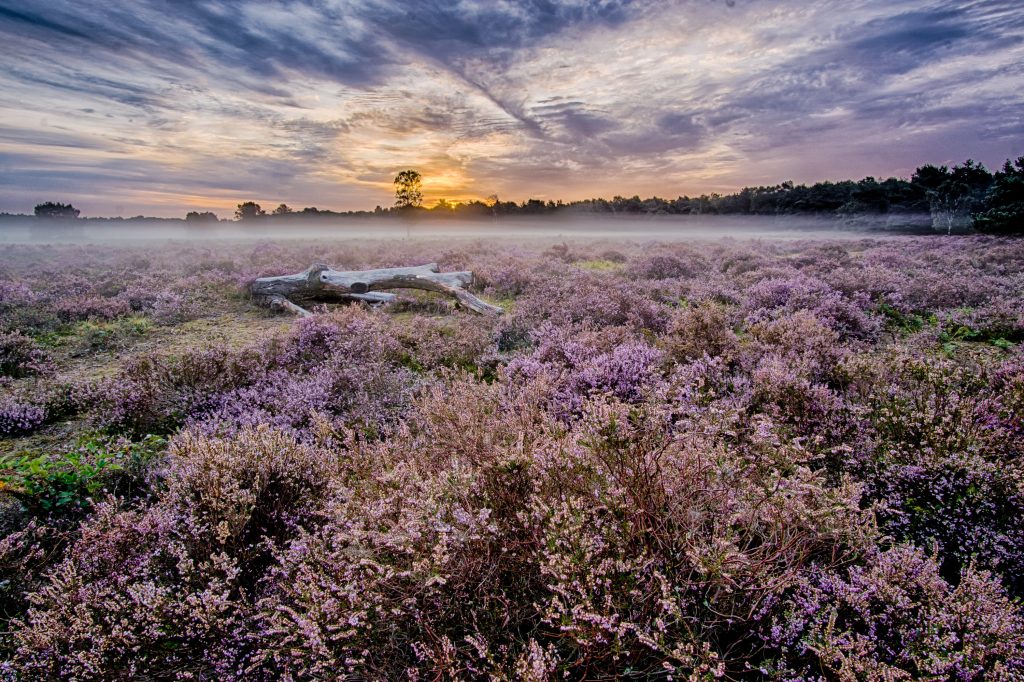
the natural source of our rich British Heather Honey
Introduction to Heathers
Heathers are charming, low-growing woody shrubs that bring vibrant colour and texture to gardens with acidic soils. Renowned for their striking purple heather flowers, these hardy plants burst into bloom from late summer into autumn, creating a stunning display that enlivens any landscape. Calluna vulgaris, commonly found in Europe and Asia Minor, thrives on acidic soils in open sunny situations. In the northern hemisphere, heathers bloom from late July to November, offering an extended period of vibrant color. Heathers thrive in open sunny situations and are especially well-suited to gardens with acidic conditions, where many other plants may struggle. They prefer full sun and well-draining soil to ensure optimal growth and flowering. Source: Encyclopedia of Life
Their evergreen foliage and dense, mat-forming habit make heathers an excellent choice for ground cover, helping to suppress weeds and stabilize soil on slopes or in rock gardens. Not only do they add year-round interest, but their nectar-rich flowers also attract a host of nectar loving insects, supporting pollinators when few other plants are in flower. Interestingly, Calluna vulgaris nectar contains compounds that inhibit a common parasite of bumble bees, further enhancing its ecological value.
To prevent powdery mildew, avoid overhead watering and improve air circulation around the plants. In many regions, heather flowers have also been used in traditional medicine to treat ailments such as kidney stones and urinary tract infections. Whether you’re looking to plant heathers in borders, containers, or as part of a naturalistic garden design, these versatile, hardy shrubs are sure to provide lasting beauty and ecological value. Source: Scientific Reports, Nature
HoneyBee & Co. proudly sources its heather honey from these Yorkshire moorlands, ensuring that every jar captures the essence of this unique habitat. The combination of the moorlands’ pristine environment and careful, sustainable beekeeping practices results in a honey that is rich in flavor and packed with natural health benefits. Heather honey is a prized product in heathland areas, known for its distinctive smoky flavor. This connection to the Yorkshire moorlands highlights the importance of preserving natural landscapes while enjoying the finest raw honey nature can offer. Source: Journal of Agricultural and Food Chemistry
Heather from the Yorkshire Moorlands
The Yorkshire moorlands provide an ideal environment for Calluna vulgaris to flourish, with their expansive heathlands offering the perfect acidic soil and climate conditions that heather plants require. This region is renowned for its stunning purple heather blooms that blanket the landscape each late summer, creating iconic vistas beloved by locals and visitors alike. The heather here not only supports a rich diversity of wildlife but also contributes to the production of some of the finest heather honey available. Source: Scottish Natural Heritage
HoneyBee & Co. proudly sources its heather honey from these Yorkshire moorlands, ensuring that every jar captures the essence of this unique habitat. The combination of the moorlands’ pristine environment and careful, sustainable beekeeping practices results in a honey that is rich in flavour and packed with natural health benefits. This connection to the Yorkshire moorlands highlights the importance of preserving natural landscapes while enjoying the finest raw honey nature can offer. Source: British Beekeepers Association (BBKA)
British Heather Honey
100% British Heather Honey, net weight 280g. Robust, aromatic, and deeply floral, our Heather Honey (280g) is a celebration of Britain’s wild moorlands. Harvested from bees foraging on blooming heather in late summer, this rare raw honey is known for its rich amber colour, jelly-like texture, and bold, full-bodied taste. 🍯
Naturally unpasteurised and cold-filtered to preserve its natural enzymes and pollen, Heather Honey offers a distinctive aroma with earthy, smoky undertones and a lingering floral finish. It’s a favourite among honey enthusiasts, perfect drizzled over porridge, served with cheeses, or enjoyed straight from the jar.
Flavour Notes:
Intensely floral and aromatic with woody, smoky, and slightly bitter undertones.
Best For:
Pairing with strong cheeses, glazing roasts, or adding depth to teas and desserts.
Ingredients:
100% pure heather honey raw, unpasteurised, and naturally rich in flavour.
What is Heather?
Heather refers to low-growing evergreen shrubs in the ericaceae family, encompassing primarily two distinct genera that gardeners commonly group together. True heather (Calluna vulgaris) represents the classic purple heather of Scottish moors, and is also a dominant feature of heaths and moorlands, while heath plants (Erica species) provide similar garden value with slightly different characteristics and blooming periods.
These shrubs are known for their bell-like blooms, which add charm and vibrancy to gardens. Heather is a defining feature of the Scottish landscape and has inspired numerous poets and musicians. White heather is regarded as lucky in Scottish tradition, particularly associated with Queen Victoria. Calluna vulgaris is deeply linked to traditional Scottish culture, often referenced in poems and considered iconic of Scotland. Source: Historic Environment Scotland
The primary difference between Calluna and Erica lies in their botanical structure and flowering times. Calluna vulgaris produces tiny, scale-like leaves arranged densely along woody stems, with bell-shaped flowers borne along the stems appearing in late summer through autumn. Erica species feature needle-like foliage and typically bloom during winter and spring months, extending the garden’s flowering season when few other plants provide colour. Source: Journal of Ecology
Native to Europe, Iceland, and the Faroe Islands, these hardy plant varieties now grow successfully across the northern hemisphere in suitable climates. Both types form dense, spreading mats that make excellent ground cover, though their height varies considerably depending on variety and growing conditions. Heather can also be found in acidic woodland areas, such as pine and oak woodlands, in addition to heaths, moorlands, and bogs. Source: Encyclopedia of Life
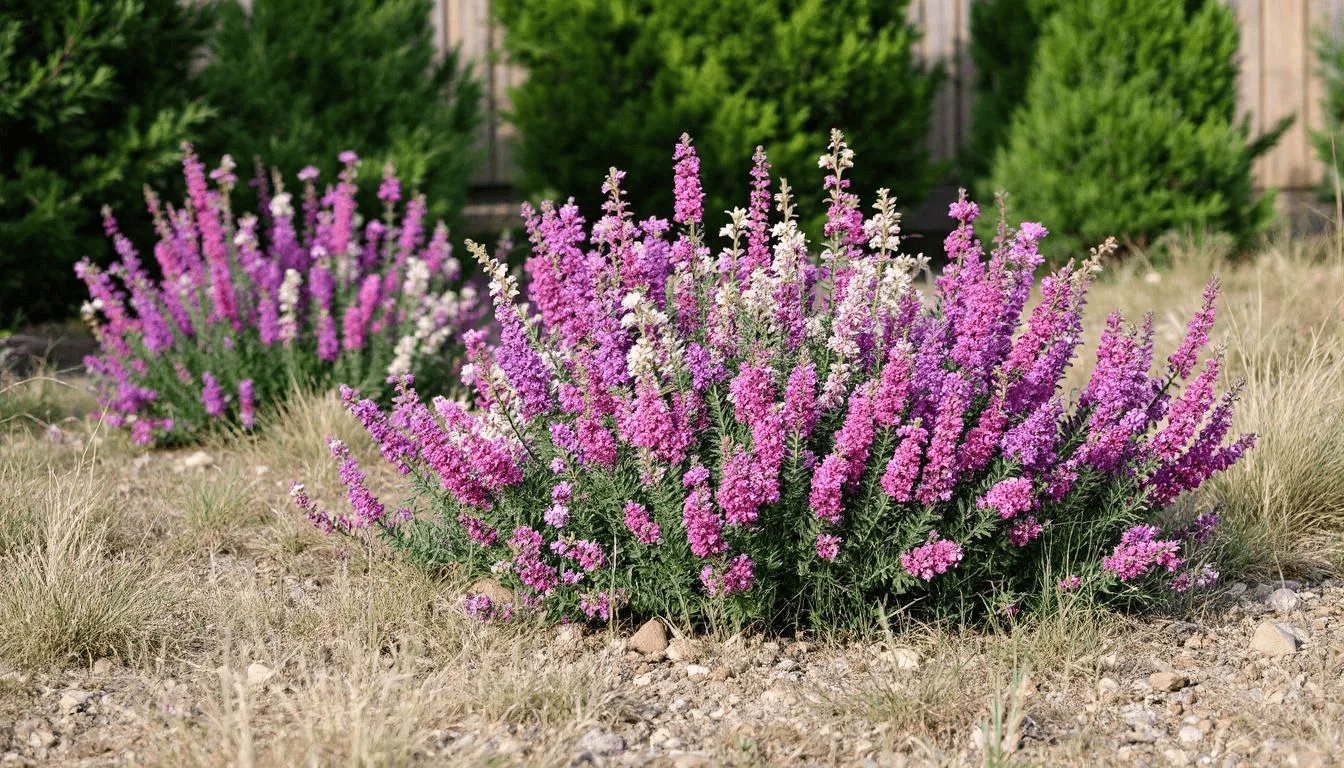
Height ranges from 20cm for compact varieties to 90cm for taller cultivars, with most common garden varieties reaching 30-60cm at maturity. The parent plant gradually expands outward through underground runners, creating natural colonies that can persist for decades with proper care.
These acid loving plants have evolved to thrive in nutrient-poor, acidic conditions where many other garden plants struggle. Their dense root systems excel at surviving severe exposure to wind, salt spray, and temperature extremes, making them invaluable for coastal gardens and challenging sites. Source: Royal Botanic Gardens Kew
Growing Conditions and Requirements
Successful heather cultivation depends primarily on providing acidic soil conditions, with soil pH between 4.5-6.0 representing the optimal range. This acidic requirement cannot be overstated – alkaline soils will cause rapid decline and eventual death of most heather varieties, regardless of other care factors. Source: RHS Gardening Advice
Soil types that work best include sandy, peaty, or rocky compositions that drain freely while retaining some moisture. Heavy clay soils require significant amendment with compost, leaf mold, or coarse sand to improve drainage. Poor drainage leads to root rot, one of the most common causes of heather failure in home gardens.
Light requirements vary somewhat by species and hardiness zone. In cooler climates (zones 3-5), heather plants perform best in full sun to maximize flowering and maintain compact growth. For best results, plant heather in a sunny position, as this encourages healthy growth and abundant blooms, especially in cooler regions. However, in warmer regions (zones 6-7), partial shade during hot afternoon hours prevents stress and extends the growing season. Heather requires one inch of water per week when young, ensuring proper establishment and healthy growth.
These hardy specimens tolerate a remarkable range of challenging conditions once established. They withstand drought, strong winds, salt exposure, and freezing conditions better than most garden plants. However, newly planted heathers need consistent moisture during their first growing season to establish strong root systems.
The key to long-term success lies in proper soil preparation before planting. Test your soil pH and amend accordingly using sulfur, peat moss, or pine needles to achieve acidic conditions. Avoid lime-based amendments or fertilizers, which will create hostile growing conditions for these acid-loving specialists.
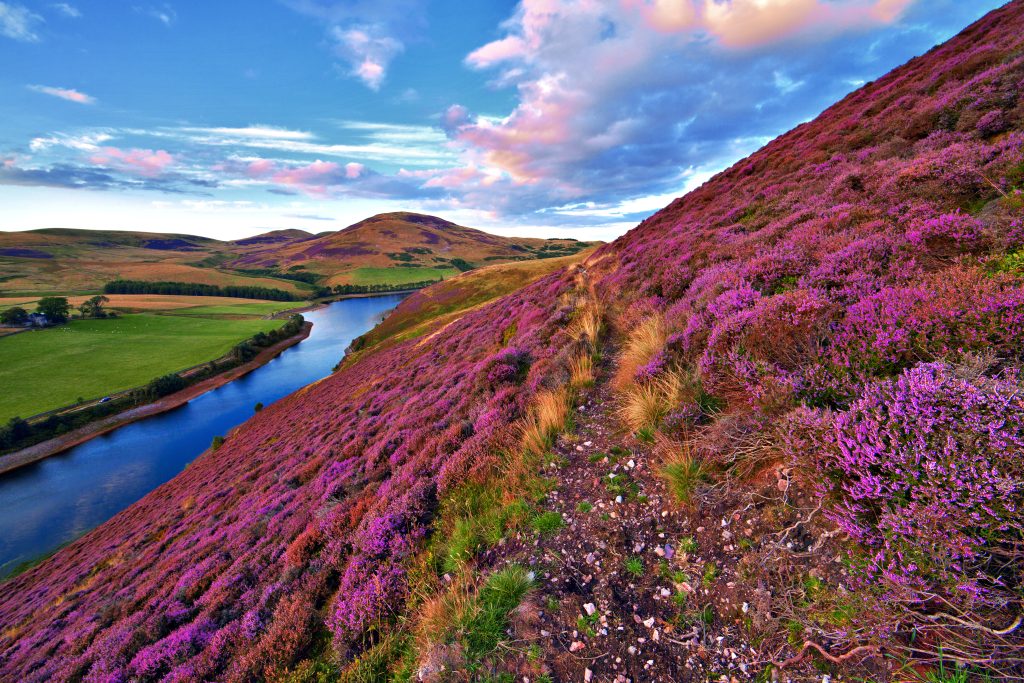
Soil Requirements
Heathers are renowned for their ability to thrive in challenging environments, but their success in the garden hinges on one crucial factor: acidic soils. These hardy plants demand a soil pH between 4.5 and 6.0, making them perfect companions for other acid loving plants such as rhododendrons. The best soil for heathers is a well-draining mix, rich in organic matter, with sandy and peaty components that mimic their native heathland habitats.
When planting heathers, it’s essential to choose a garden location where the soil naturally leans acidic or can be easily amended. Incorporating compost or peat moss into the planting area not only boosts organic content but also helps lower the pH, creating the ideal environment for strong root development and healthy growth. Sandy soils are particularly beneficial, as they provide excellent drainage and prevent the waterlogged conditions that can lead to root rot—a common issue for these low growing evergreen shrubs.
Heathers are remarkably tolerant of poor soil quality, but they truly flourish when the ground is enriched with moderate levels of organic matter. Avoid using fertilizers high in nitrogen, as these can weaken the plant and encourage soft, leggy growth at the expense of vibrant flower colours. Instead, opt for specialised feeds designed for acid loving plants, which will support robust blooms in shades of pink, purple, and white throughout the year.
Whether you’re planting heathers as ground cover, in rock gardens, or as a striking accent in borders, paying attention to soil requirements is key to unlocking their full potential. With the right acidic, well-drained soil, your heathers will reward you with year round evergreen foliage and a spectacular display of flower colours ranging from delicate mauve to deep purple, making them a standout feature in any garden.
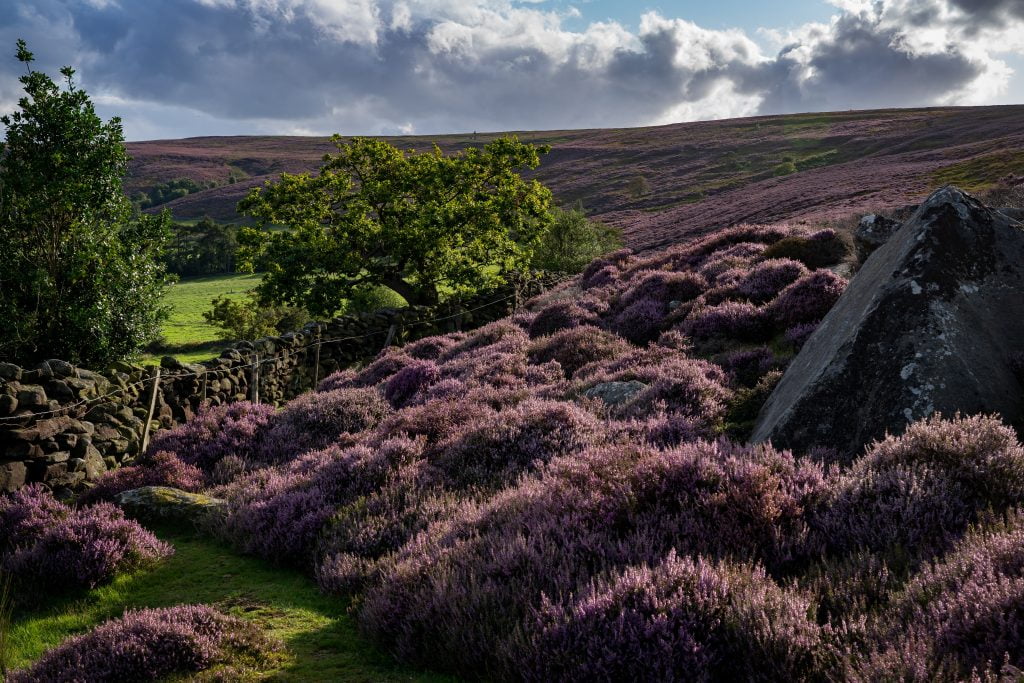
Popular Heather Varieties
Modern heather breeding has produced hundreds of cultivars offering diverse flower colours, foliage tones, and blooming periods. RHS plants for heather include many award-winning varieties that provide exceptional garden performance and reliability.
Calluna vulgaris remains the most popular choice, with over 800 named cultivars available worldwide. While most are considered low-growing shrubs, some Calluna vulgaris cultivars can grow quite tall, reaching up to 1 metre in height, which is notable for this group. ‘Aurea’ stands out for its golden-yellow foliage that brightens winter gardens, while ‘Wickwar Flame’ offers spectacular orange-red foliage complemented by delicate mauve flowers during late summer blooming periods.
For winter interest, Erica darleyensis varieties excel in harsh conditions. ‘White Perfection’ produces masses of pure white flowers from December through March, creating stunning contrast against dark evergreen foliage. ‘Kramer’s Rote’ delivers vibrant red flowers that persist throughout winter months, providing nectar loving insects with crucial late-season food sources. Heathers can also be grown in containers of ericaceous compost, making them a versatile option for patios and small spaces.
Flower Colors and Characteristics
Heather flowers display an impressive range of colours spanning white, pink, purples, purple, and deep red tones. Among heather cultivars, purples are especially notable, with a variety of shades from soft lavender to deep violet, adding decorative appeal to garden color schemes. The tiny, bell-shaped or urn-shaped blooms cluster in dense racemes along stem tips, creating colorful spikes that persist for months rather than weeks. Purple heather holds special significance as one of Norway’s national flowers, chosen in a popular vote in 1976. Source: Journal of Ecology
| Variety | Flower Colour | Blooming Period | Foliage Type | Height |
|---|---|---|---|---|
Calluna ‘Anette’ | Deep pink | July-September | Dark green | 30cm |
Calluna ‘Darkness’ | Deep purple | August-October | Dark green | 25cm |
Erica carnea ‘Springwood White’ | White | December-April | Bright green | 20cm |
Erica cinerea ‘Atropurpurea’ | Purple | June-September | Grey-green | 40cm |
Daboecia cantabrica | Pink/purple | June-October | Large green | 60cm |
White heather holds special significance in Scottish tradition, where finding naturally occurring white-flowered variants among purple heather populations brings good luck. According to legend, white heather is considered especially lucky, making it a cherished symbol in folklore. These rare forms have been carefully propagated and now exist as stable garden cultivars. | ||||
The flowers themselves provide more than aesthetic value. Their extended blooming periods offer crucial nectar sources for bees, butterflies, and other pollinators during times when few other plants flower, particularly during winter months when Erica species bloom. |
Seasonal Blooming Periods
One of heather’s greatest advantages lies in providing year-round garden interest through carefully planned variety selection. Different species and cultivars bloom at various times, allowing gardeners to maintain continuous colour throughout all seasons.
Summer bloomers dominate the Calluna category, with most varieties flowering from late July through September. These create the classic heather landscape image, with sweeping masses of purple, pink, and white covering hillsides and garden beds during peak summer months. Calluna vulgaris is also notably tolerant of occasional burning, a common heathland management practice that promotes healthy regrowth and biodiversity.
Autumn bloomers extend the season into October and November, particularly useful as other garden plants fade. Extended-flowering Calluna varieties bridge the gap between summer blooms and winter dormancy, providing crucial late-season colour.
Winter bloomers transform the garden during the coldest months. Erica carnea and Erica darleyensis varieties begin flowering in December and continue through March, creating spectacular displays against snow and frost. These hardy varieties tolerate freezing conditions while maintaining their blooms.
Spring bloomers complete the annual cycle, with early Erica species continuing into April and May. This seamless transition ensures that some heather variety always provides flowers throughout the year.
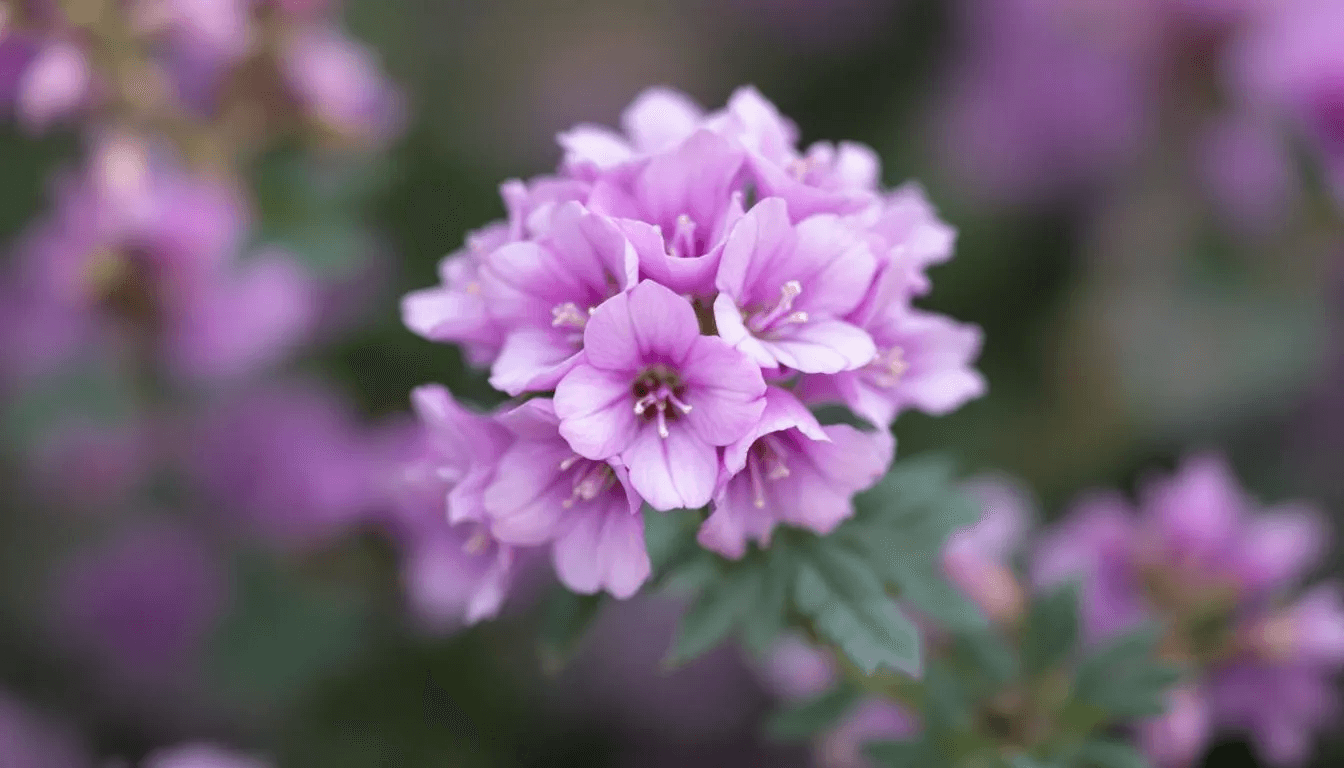
Planting and Care Instructions
Proper planting technique establishes the foundation for long-term heather success. The best time for planting occurs in spring after frost danger passes, allowing plants to establish strong root systems before facing winter stress.
Plant spacing depends on your intended use, but 30-45cm apart creates effective ground cover within 2-3 years. For immediate impact in rock gardens or containers, closer spacing works well, though plants may require division sooner.
Step-by-step planting process:
- Prepare the planting area by testing and adjusting soil pH to 4.5-6.0 range
- Dig holes twice the width of the root ball but no deeper
- Mix existing soil with equal parts compost or peat moss
- Plant at the same depth as the container, never deeper
- Water thoroughly and apply 5cm mulch layer around plants
- Maintain consistent moisture for the first growing season
Initial watering requirements include approximately 2.5cm per week during the first growing season. Deep, infrequent watering encourages extensive root development better than frequent shallow watering.
Annual pruning in early spring before new growth starts maintains compact shape and encourages abundant flowering. Pruning heathers in early spring also stimulates faster growth, ensuring the plants remain vigorous and healthy throughout the growing season. Use sharp, clean tools to remove about one-third of the previous year’s growth, cutting just above outward-facing buds.
Fertilising Requirements
Heather plants evolved in nutrient-poor environments and require minimal fertilisation when grown in appropriate soil conditions. Over-fertilisation actually harms these plants more than Under-fertilisation, causing excessive vegetative growth at the expense of flowering.
In organic-rich soil with proper pH, established heathers rarely need supplemental feeding. If your soil lacks organic matter, apply acid-loving plant fertiliser once yearly in early spring at half the recommended rate for other plants.
Maximum application rates should never exceed 1 pound per 100 square feet annually. Choose fertilisers specifically formulated for acid loving plants like rhododendrons, azaleas, and blueberries, as these contain appropriate nutrient ratios without harmful alkaline components.
Avoid fertilizing after August 1st in most climates, as late-season feeding promotes tender new growth susceptible to winter damage. This timing allows plants to properly harden off before freezing conditions arrive.
Watering Guidelines
Established heather plants demonstrate remarkable drought tolerance in suitable climates, particularly in zones 4-5 where cool, moist conditions prevail naturally. However, newly planted specimens require consistent moisture during their first full growing season.
Deep weekly watering works better than frequent light applications, encouraging roots to penetrate deeply into the soil profile. Apply water slowly at soil level rather than overhead to minimise fungal disease problems and maximise root zone moisture.
In warmer zones 6-7, increased watering becomes necessary during hot summer periods. Monitor soil moisture levels regularly and provide supplemental irrigation when the top 5cm of soil feels dry.
Avoid overhead watering whenever possible, as wet foliage encourages powdery mildew and other fungal problems. Drip irrigation or soaker hoses provide ideal water delivery methods for established heather plantings.

Pruning and Shaping
Pruning and shaping are essential steps in keeping your heathers healthy, compact, and full of vibrant blooms. Regular pruning encourages fresh new growth and helps maintain the plant’s attractive, bushy form. For most heathers, the best time to prune is in early spring, just as new growth begins, or immediately after flowering in late summer for varieties that bloom during the warmer months.
When pruning, use clean, sharp tools to make neat cuts just above the old flower spikes or healthy shoots. This not only prevents the spread of disease but also stimulates the plant to produce more shoots and flowers in the coming season. Avoid cutting into old, woody stems, as heathers may not regrow from bare wood. Instead, focus on trimming back the previous season’s growth to keep the plant dense and encourage a flush of new foliage and blooms. With consistent pruning, your heathers will remain vigorous, colorful, and well-shaped year after year.
Overwintering
Heathers are naturally hardy, but a little extra care during the winter months can help them thrive, especially in regions with harsh weather. In colder climates, protect your heathers from freezing temperatures by applying a layer of straw or pine needles as mulch around the base of the plants. This insulation helps shield the roots from extreme cold and temperature fluctuations.
For container-grown heathers, consider moving pots to a sheltered spot or even indoors if severe frost is expected. In milder climates, the main concern is excessive moisture, which can lead to root problems. Ensure your heathers are planted in well-draining soil and avoid overwatering during the winter. Good drainage is key to preventing waterlogged roots and keeping your plants healthy until the growing season returns. Container-grown heather requires more regular watering than ground-planted heather, as pots tend to dry out faster.
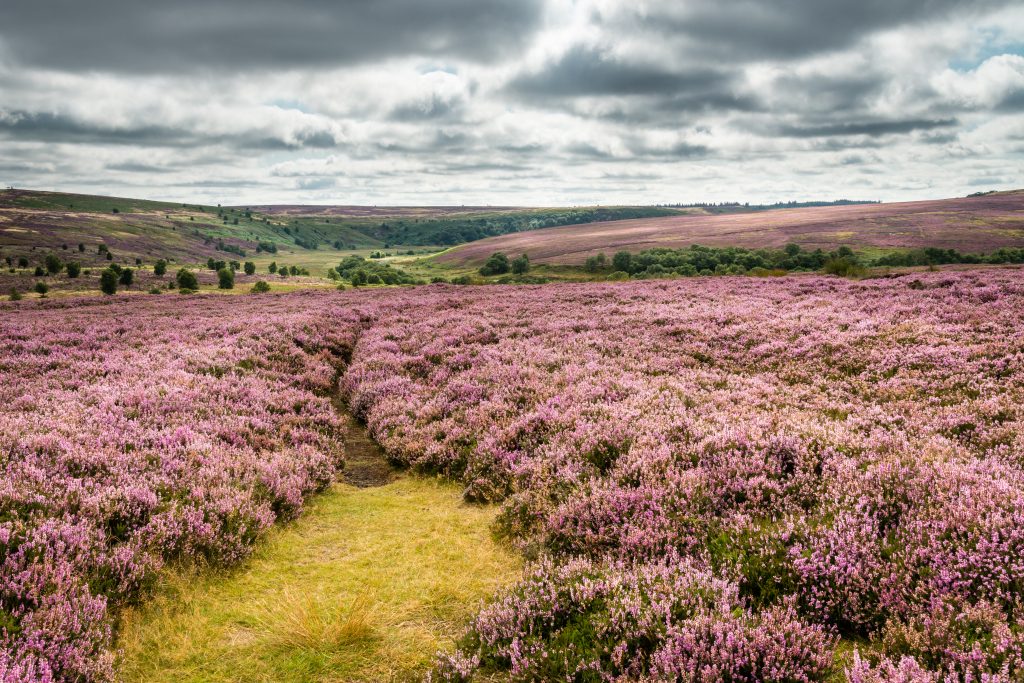
Propagation Methods
Heather propagation offers several reliable methods for expanding your collection or replacing aging plants. Each technique has specific timing requirements and success rates that vary by species and growing conditions.
Summer cuttings taken in late july provide the highest success rates for most varieties. Select healthy, non-flowering shoots approximately 5-8cm long from the current year’s growth. Remove lower leaves and dip cut ends in rooting hormone before inserting into a mixture of peat and sand.
Root cuttings indoors during fall and winter months when plants enter dormancy. Maintain consistent moisture and cool temperatures (15-18°C) in a clear plastic bag or propagation chamber. Most cuttings develop roots within 6-8 weeks under proper conditions.
Seed propagation requires specialized techniques that mimic natural fire conditions. Heather seeds need exposure to smoke or extreme heat to break dormancy, reflecting their evolution in fire-prone ecosystems. Soak seeds in liquid smoke solution or briefly expose to flame before sowing in acidic potting mixture.
Division of established clumps works best in early spring before new growth begins. Carefully separate sections with both roots and stems intact, ensuring each division has adequate root mass to support independent growth.
Propagation success tips:
- Use sterile potting media to prevent fungal problems
- Maintain consistent moisture without waterlogging
- Provide bright, indirect light for developing plants
- Gradually acclimate rooted cuttings to outdoor conditions
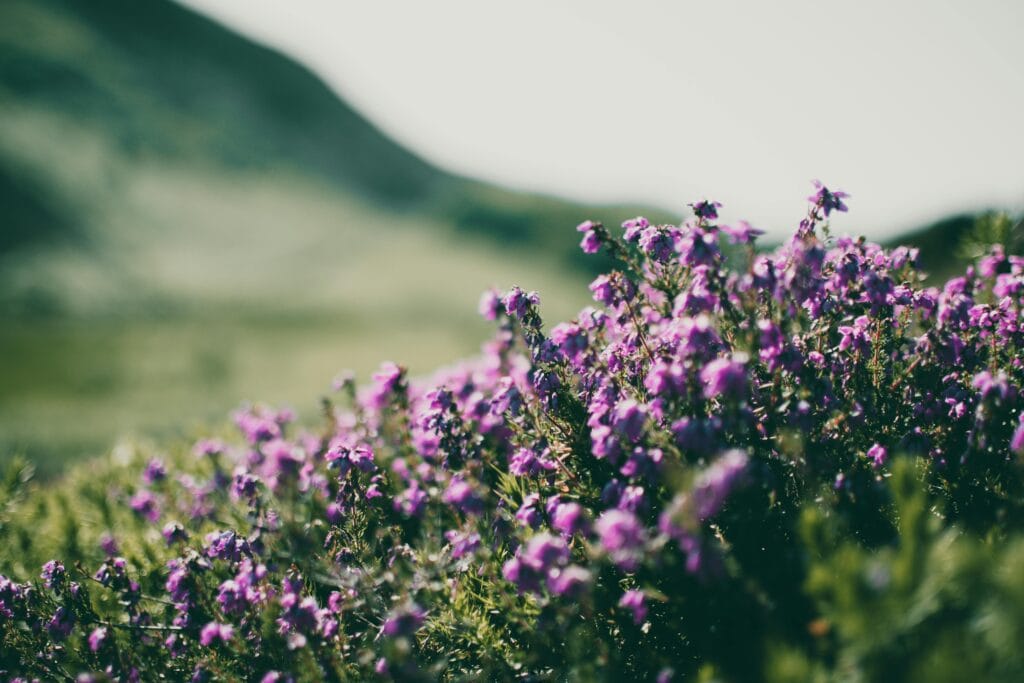
Common Problems and Solutions
Despite their reputation for toughness, heather plants face several common problems that can significantly impact their health and appearance. Understanding these issues and their solutions helps maintain thriving heather gardens.
Root rot represents the most serious threat to heather health, typically caused by waterlogged soil conditions or poor drainage. Symptoms include yellowing foliage, stunted growth, and eventual plant death. Prevention involves proper soil preparation with adequate drainage amendments before planting.
Treatment for root rot:
- Improve drainage immediately through soil amendments
- Reduce watering frequency and volume
- Apply fungicide treatments in severe cases
- Replace plants in severely affected areas
Powdery mildew appears as white, fuzzy growth on leaves and stems during humid conditions with poor air circulation. This fungal disease rarely kills plants but reduces their vigor and appearance significantly.
Heather beetle (Lochmaea suturalis) damage manifests as brown, defoliated patches that can turn brown entire sections of plants. Adult beetles feed on foliage during spring and summer, while larvae attack roots during autumn and winter.
Integrated pest management for heather beetle:
- Monitor plants regularly during peak activity periods
- Remove and destroy affected plant material
- Apply beneficial nematodes to control larvae
- Use targeted insecticides only when damage exceeds acceptable levels
Leggy growth from over-fertilisation creates open, sparse plants with reduced flowering. This problem develops gradually over several seasons but can be corrected through proper pruning and reduced fertilisation.
Winter damage in harsh climates affects exposed plants, particularly during extreme cold snaps or ice storms. Preventive measures include wind barriers, mulching, and selecting appropriate varieties for your hardiness zone.
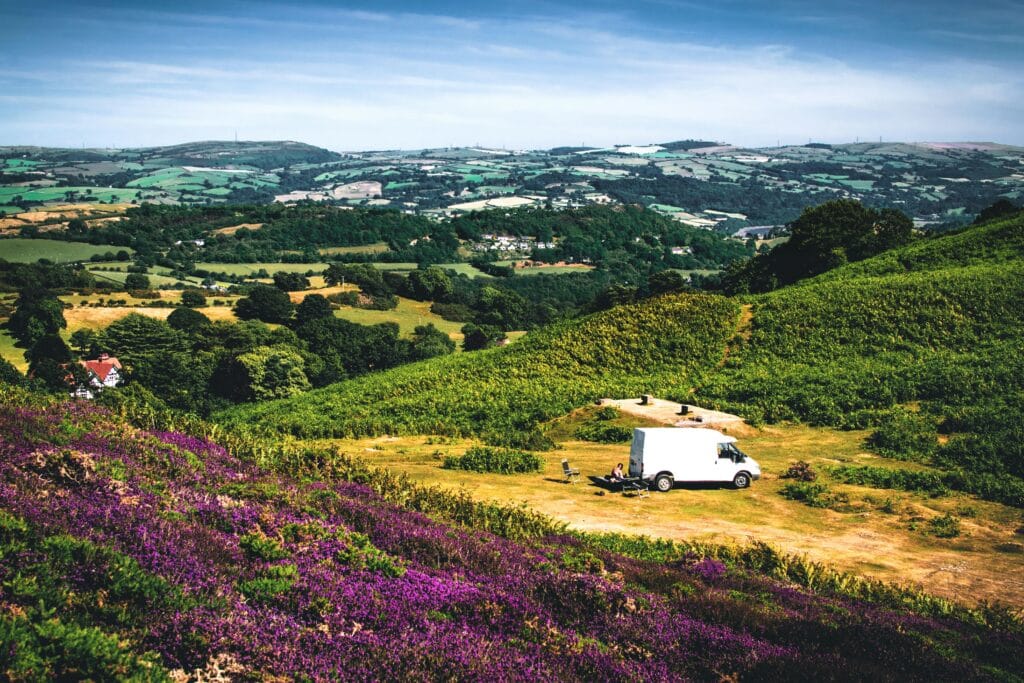
Uses and Benefits
Heather plants excel in numerous landscape applications, from practical ground cover solutions to specialised garden designs. Their versatility stems from adaptability to challenging conditions where other plants struggle to survive.
Ground cover applications take advantage of heather’s spreading growth habit and dense foliage. Once established, heather plantings suppress weeds effectively while requiring minimal maintenance compared to traditional lawn areas. This makes them ideal for slopes, rock gardens, and difficult areas where mowing proves impractical.
Wildlife value extends throughout the year, with different species providing resources during various seasons. Summer-blooming varieties support butterflies and bees during peak activity periods, while winter-flowering types offer crucial nectar sources when few other plants bloom.
Historical uses demonstrate heather’s practical value beyond ornamental applications. Traditional communities used heather stems for fuel, building materials, and broom making. Young shoots provided livestock feed, while flowers produced honey and herbal preparations.
Calluna vulgaris was used to dye wool yellow and to tan leather in historical practices. In Scotland, Calluna vulgaris was historically used to make brooms, with its name derived from the Greek word for ‘to brush.’ In traditional Scottish heather beer recipes, two thirds of the mixture would be heather and one third malt, highlighting the significance of two thirds in historical brewing practices. Source: BBC Scotland
Modern landscaping applications:
- Coastal gardens benefiting from salt tolerance
- Moorland-style plantings for naturalistic designs
- Container growing for patios and small spaces
- Erosion control on slopes and embankments
- Low-maintenance alternatives to traditional groundcovers
Container growing opens heather cultivation to gardeners without suitable soil conditions. Use acidic potting mix in containers with excellent drainage, and select compact varieties that won’t outgrow their space quickly.
The ecological benefits extend beyond immediate wildlife support. Heather’s dense root systems help prevent soil erosion, while their ability to thrive in poor soils makes them valuable for reclamation projects and challenging sites.
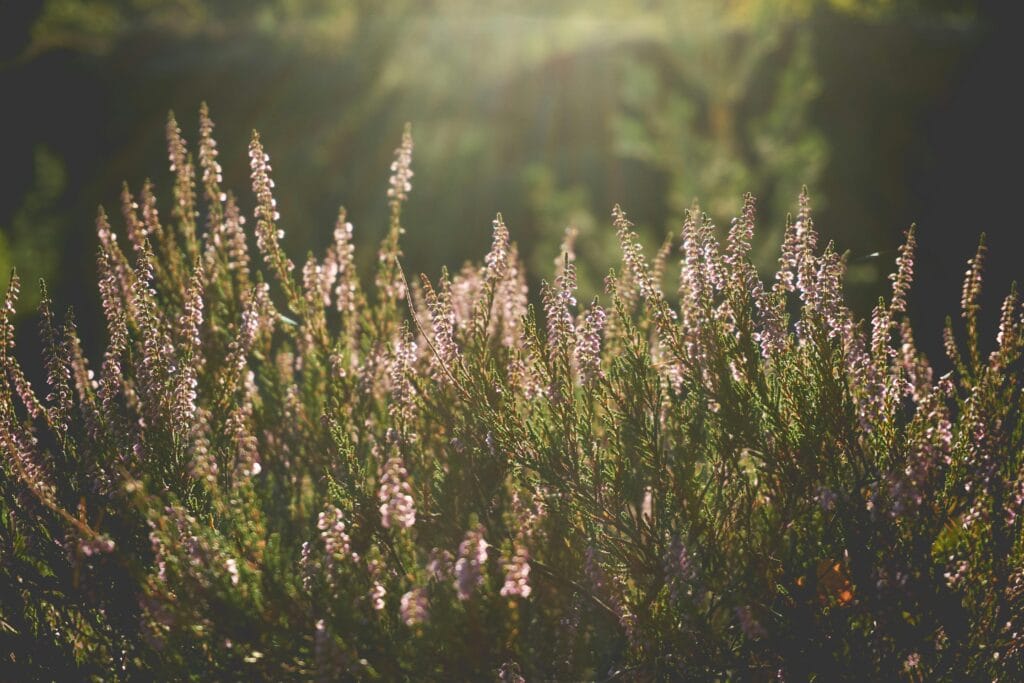
Invasive Species Considerations
Before planting heather, research local regulations regarding potential invasive species concerns. In certain regions, including parts of New Zealand, North America, and Australia, some heather species have escaped cultivation and established problematic populations in natural areas.
Calluna vulgaris shows invasive tendencies in areas with suitable climate and soil conditions, particularly regions with cool, moist summers and acidic soils. Check with local extension services or native plant societies for current recommendations in your area.
Alternative native plants may provide similar aesthetic and functional benefits without invasive risks. Research indigenous low-growing shrubs with evergreen foliage and extended flowering periods that naturally occur in your region.
Responsible gardening practices:
- Verify legal status before purchasing or planting
- Choose sterile cultivars when available
- Prevent spread beyond intended growing areas
- Remove spent flowers to reduce seed production
- Monitor for unwanted spread into natural areas
When heather cultivation is appropriate, these remarkable plants offer unmatched combination of beauty, durability, and ecological value. Their ability to thrive in challenging conditions while providing year-round interest makes them invaluable additions to suitable gardens.
Whether you’re dealing with acidic soils that limit other plant options, seeking low-maintenance ground cover solutions, or simply wanting to enjoy months of colourful blooms with minimal care requirements, heather plants deliver exceptional garden performance. The Victorian era saw the increased popularity of heather as a symbol of good luck in England due to its rarity. Start your heather garden today by selecting varieties suited to your climate zone and soil conditions, and prepare to enjoy these hardy plant treasures for many years to come.
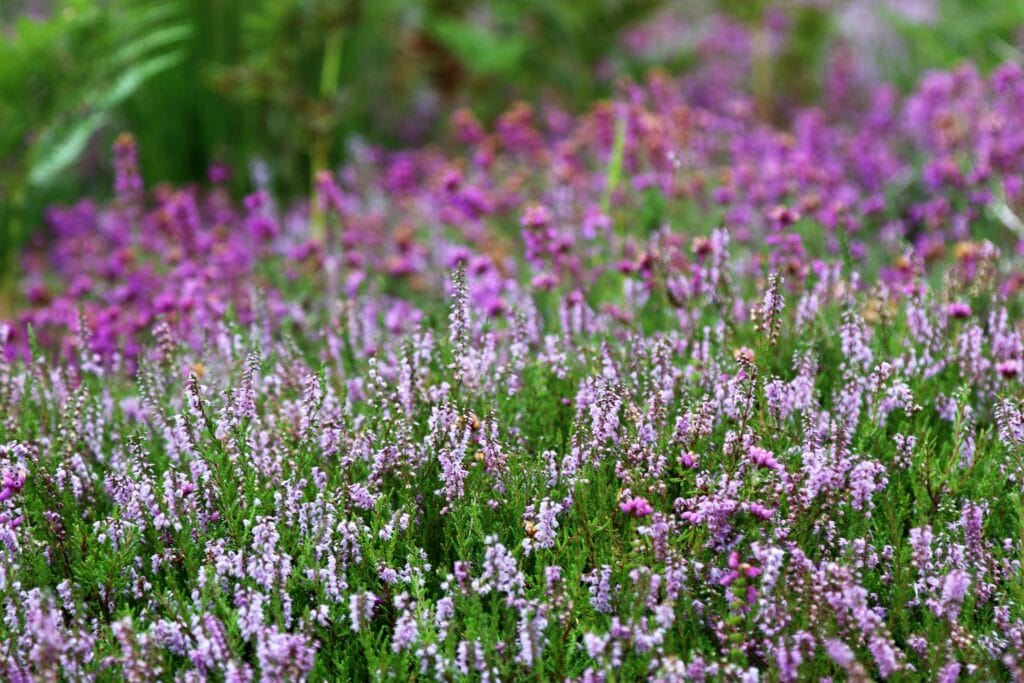
Conclusion and Final Tips
Heathers are among the best plants for gardeners seeking year-round colour, resilience, and low-maintenance beauty in acidic soils and open sunny situations. To keep your heathers looking their best, provide them with well-draining, acidic soil, plenty of sunlight, and regular pruning to encourage healthy growth and abundant blooms. Once established, heather has average water needs but requires more frequent watering in warmer zones to prevent stress. Be mindful not to overwater, as these hardy plants prefer slightly dry conditions, especially in winter.
Protect your heathers from extreme cold with mulch, and ensure containers are sheltered or well-drained to avoid winter damage. With these simple care steps, your garden will benefit from the vibrant flowers, evergreen foliage, and the added bonus of attracting nectar loving insects throughout the year. Whether you’re a seasoned gardener or just starting out, heathers are a rewarding choice that will bring lasting color and wildlife interest to your outdoor space.

